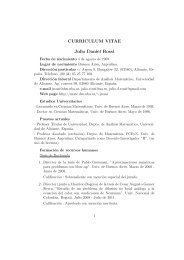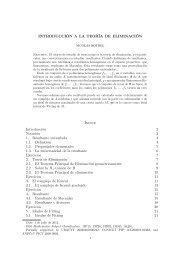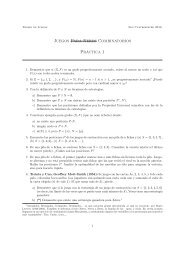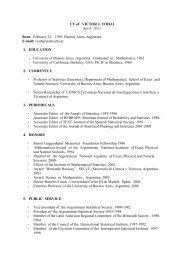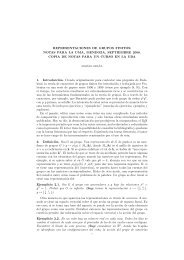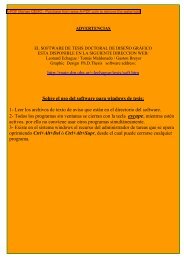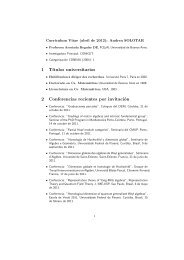WEIERSTRASS'S NON-DIFFERENTIABLE FUNCTION
WEIERSTRASS'S NON-DIFFERENTIABLE FUNCTION
WEIERSTRASS'S NON-DIFFERENTIABLE FUNCTION
You also want an ePaper? Increase the reach of your titles
YUMPU automatically turns print PDFs into web optimized ePapers that Google loves.
1916] weierstrass's non-difperentiable function 311<br />
for all values of x. We have<br />
f(x + h) -f(x) = - 2 X) «" sin {bnw(x + §*)} sin \bnirh<br />
Choose v as in (2.42). Then<br />
= 0 X a" I sin \bn irh |.<br />
/(* + *) -/(a-) = 0(|A| ¿a« &« + !>)<br />
0 K + l<br />
= 0(o" &"|*| + a")<br />
= 0(a") = 0(|*|*).<br />
The condition is therefore satisfied, and indeed uniformly in x. It should<br />
be observed that our argument fails when ab = 1, £ = 1. In this case we<br />
can only assert that<br />
/(* + *) -f(x) =0(1*1*1+a") = o(|A|log-ir).<br />
It should also be observed that the argument of this paragraph applies to<br />
the sine series as well as to the cosine series, and is independent of the restriction<br />
that b is an integer.<br />
2.6. The proof of Theorems 1.31 and 1.33 is now complete so far as the<br />
cosine series is concerned. The corresponding proof for the sine-series differs<br />
only in detail. The lemmas required are the same except that Lemma 2.15<br />
must be replaced by<br />
Lemma 2.61. //<br />
cos bn TTX —» 0,<br />
then b must be odd and<br />
_P±±<br />
x - b« '<br />
so that cos bnTX = 0 from a certain value of n onwards:<br />
and that corresponding changes must be made in the wording of Lemma 2.21.<br />
If now the value of x is not exceptional (i. e. one of those specified in Lemma<br />
2.61), we can repeat the arguments of 2.3. It is therefore only necessary<br />
to discuss the exceptional values, which can exist only if b is odd. We have<br />
in this case<br />
sin {bnw(x + h)} = sin (bn-«p* + #"-« tt + bn wh)<br />
= ±SÍn (£&n-î 7T + 6n7TÄ),<br />
for n > q, the sign being fixed as in 2.4. The last function is numerically<br />
equal to cos bn irh; it has always the same sign as cos bn irh, or always the<br />
opposite sign, if b is of the form 4* + 1 ; while if b is of the form 4k + 3 the






